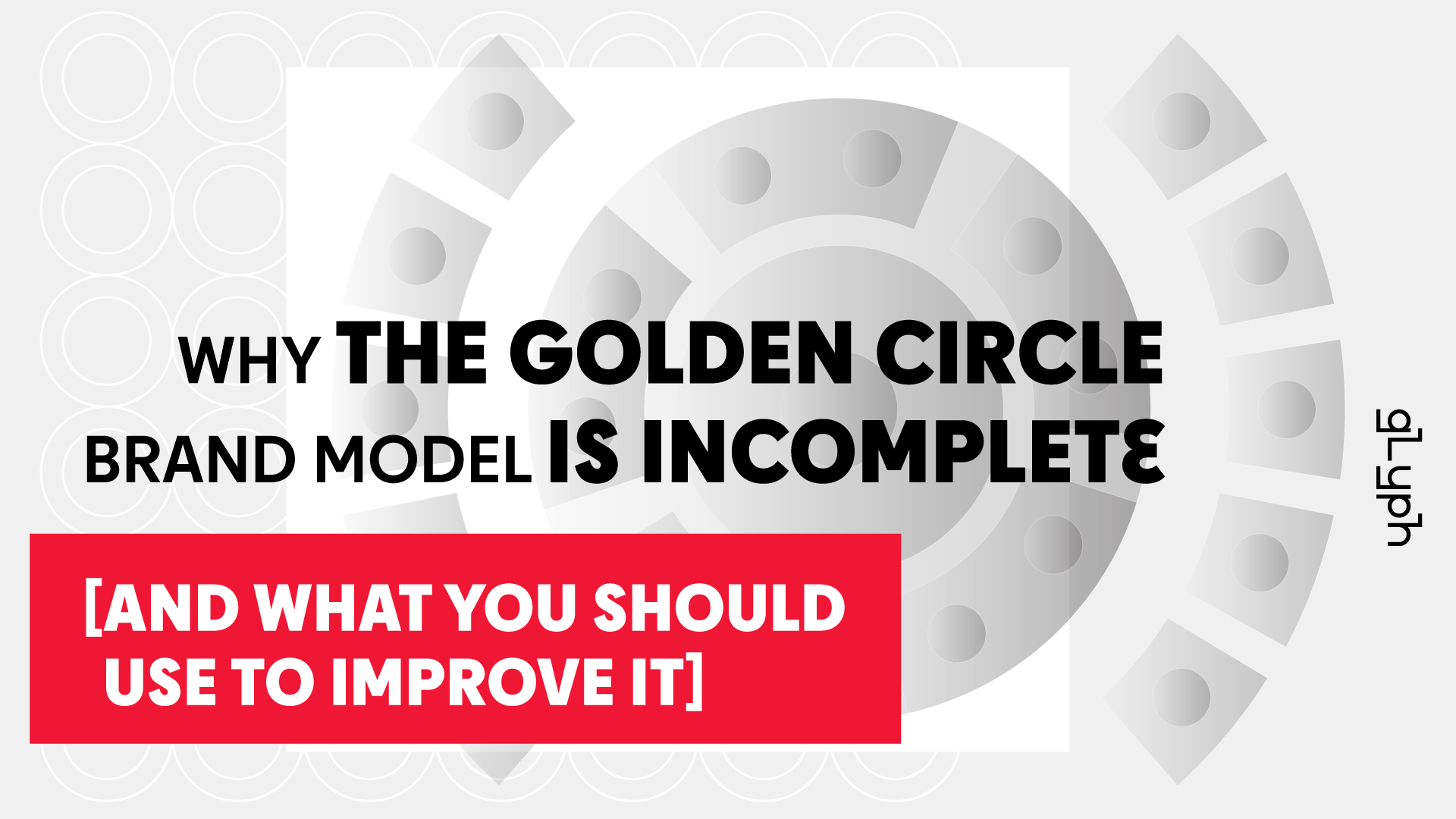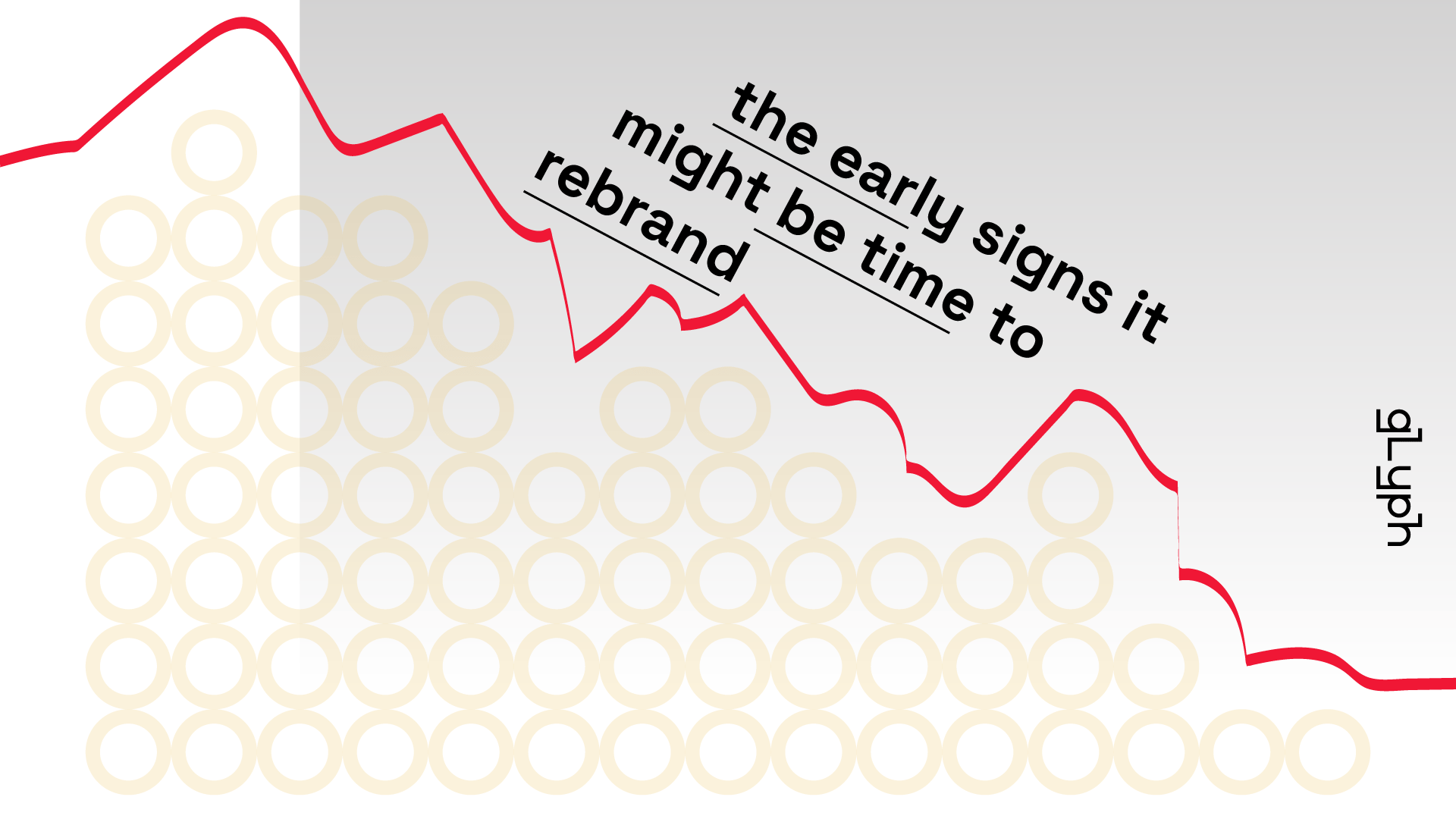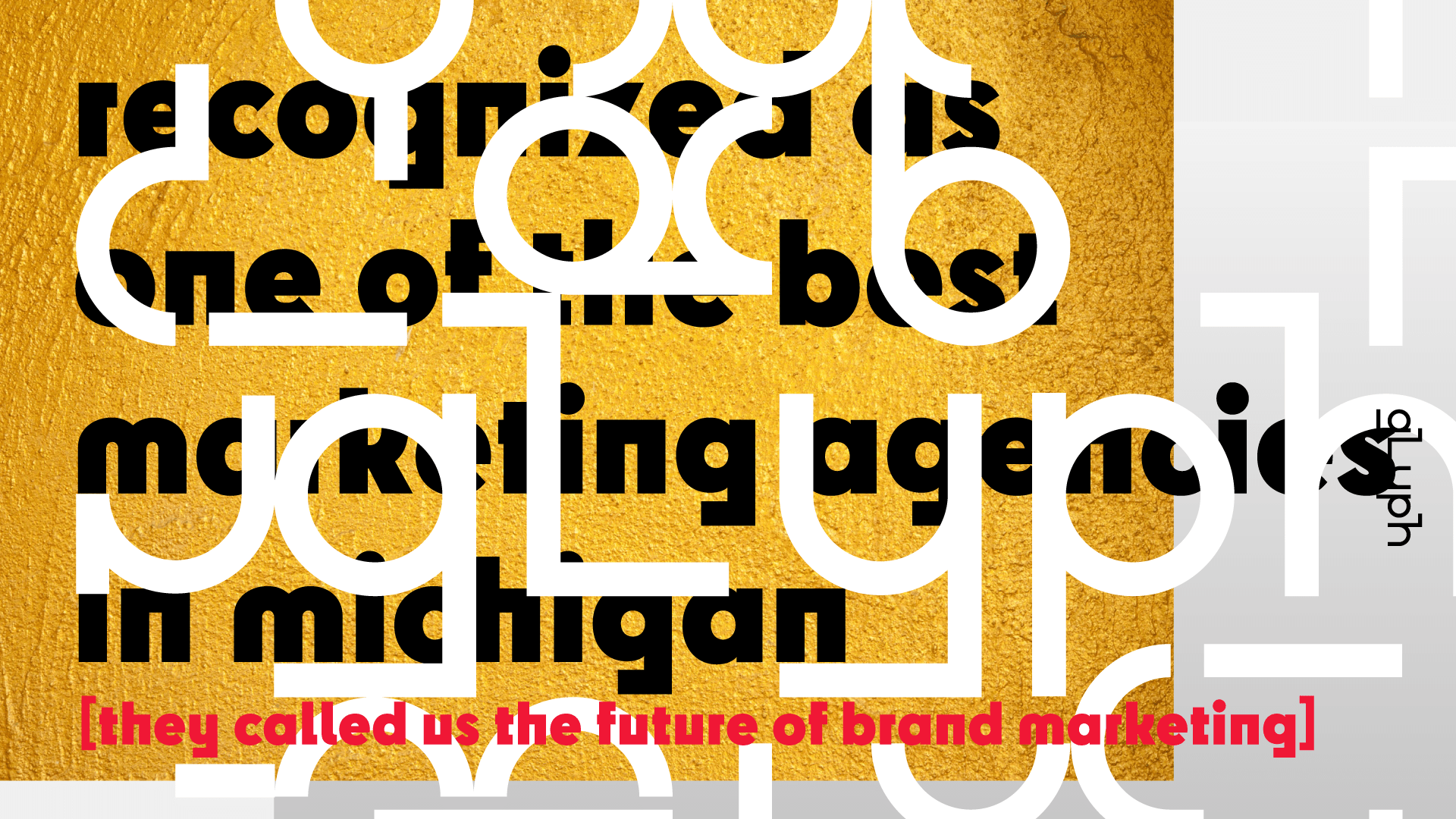In the world of branding, few concepts have captured as much attention as Simon Sinek’s Golden Circle model.
By placing “Why” at the core of a brand’s purpose, followed by “How” (the principles guiding your actions) and “What” (the products or services you offer), the Golden Circle promises a straightforward framework for building purpose-driven brands.
It’s easy to understand, memorable, and has inspired countless businesses to focus on the “Why” behind their work.
But here’s the problem: The Golden Circle is incomplete.
While the model has value for a handful of industry leaders like Apple and Nike, we have found it oversimplified and impractical for most businesses. It’s missing critical elements by ignoring HALF of branding - the “Who.”
Without a clear understanding of your target audience, your “Why” lacks purpose, your “How” lacks focus, and your “What” becomes irrelevant. After all, a brand doesn’t exist in isolation. A brand truly only exists to serve a specific group of people, solve their problems, and fulfill their needs.
Moreover, the Golden Circle’s heavy emphasis on “Why” creates a blind spot for businesses that would benefit far more from refining their “How.” For most companies, especially those competing in crowded markets - aka every brand, the guiding principles and processes (the “How”) make a more tangible impact than lofty ideals.
Executing your “How” effectively not only builds customer trust but also lays the foundation for long-term growth and brand equity.
In this article, we’ll explore why the Golden Circle falls short as a comprehensive brand strategy framework. We’ll highlight its missing components, gently point out its limitations, and showcase a more complete approach that we’ve been using for almost a decade with our clients.
The Missing Element: “Who” Comes First
Simon Sinek’s Golden Circle popularized the idea of starting with “Why,” placing purpose at the core of a brand’s identity. While this works in general practice and sounds warm and fuzzy, it creates generic results. This happens because it skips entirely over the most critical element of any successful brand: Who.
Your brand doesn't exist in a silo. One element focusing on "Why" attempts to higlight. Customers have choices. A lot of them.
Without defining who your audience is first, your “Why” becomes a philosophical element - an abstraction. Nothing more than a guess. An unfounded claim that only considers you and not your alignment.
Furthermore, your “How” becomes directionless. And your “What” fails to resonate. Brands don’t exist in a vacuum. They exist to serve people.
By skipping “Who,” the Golden Circle kinda ignores the entire point of branding and business. You ignore the foundation upon which every other element of a brand strategy is built: being paid to provide a solution.
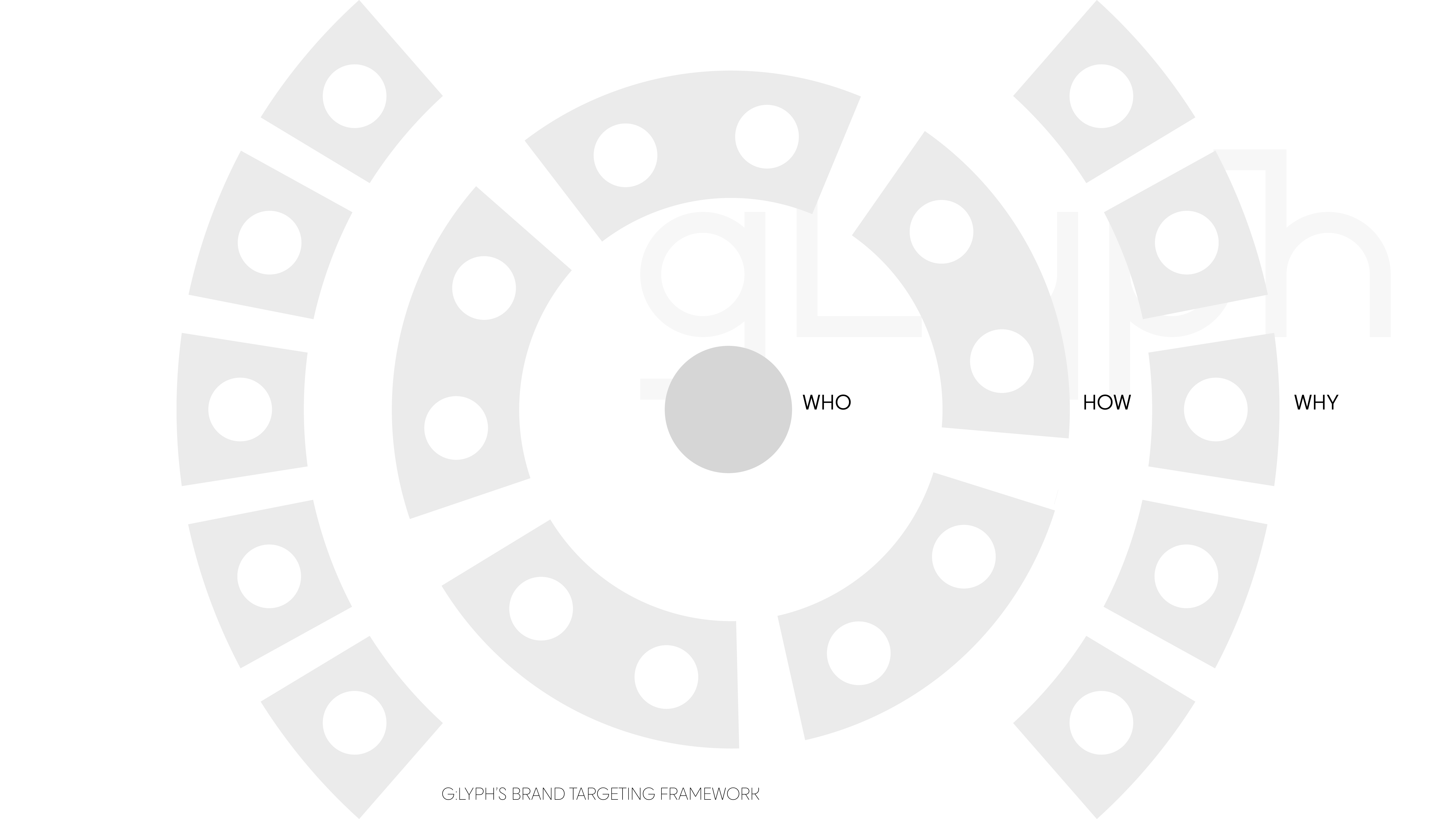
“Who, How, Why” Starts at the Real Core
Meet our interpretation of a better Golden Circle model - Glyph's Brand Targeting Framework. We believe that a complete branding model must prioritize the “Who” at its center, moving outward to “How” (the principles and processes you’ll use to engage them that force distinction and seperation between brands).
Finally, at the most outer layers, you have your “Why” (the purpose that binds it all together that moves you into your own unique market space).
We have found that it's not starting with "Why" that creates difference, it's creating distance from other brands with your "Why" that gives it transactional and transformation value.
Here’s why this shift matters:
1. “Who” Is the Foundation of Relevance
Your brand’s success depends on understanding the people you serve. This means defining your ideal customer, identifying their needs, and pinpointing their pain points.
Without this clarity, your messaging and offerings won’t resonate—no matter how inspirational your “Why” is.
Sephora thrives by deeply understanding its customers’ diverse beauty needs. This focus on “Who” allows them to create personalized shopping experiences that resonate with a broad yet specific audience.
2. “How” Turns Understanding Into Action
Once you’ve identified your audience, the “How” outlines the principles and processes by which you deliver value. It’s the actionable layer that connects your brand to your audience, creating trust and driving loyalty.
IKEA’s “How” focuses on affordable, minimalist design and a streamlined customer journey, appealing to a global audience of cost-conscious, design-savvy shoppers.
3. “Why” Adds Purpose to Build Loyalty
After establishing the “Who” and “How,” the “Why” acts as the emotional glue. It helps strengthen customer loyalty and reinforces your brand culture. However, the “Why” should complement—not overshadow—the other elements.
Peloton’s “Why” (“empowering people to be the best version of themselves”) is meaningful only because their “Who” (fitness-focused individuals) and “How” (on-demand, connected workout experiences) are well-defined.
Starting With “Who” Is a Game Changer
Starting with “Who” shifts the focus from abstract ideals to customer-centric execution. This approach ensures that your brand is always relevant, actionable, and aligned with the needs of your audience.
It also ensures that your “How” and “Why” are grounded in real-world application, making them far more effective at building long-term loyalty and brand equity.
By reordering the flow to “Who, How, Why,” you’re starting from the inside out - just like the Golden Circle suggests - but with a more grounded and actionable approach.
The Problem With an Abstract “Why”
For many companies, the “Why” often lacks tangibility. Both leadership and customers can find it too abstract or idealistic to translate into meaningful customer connections. While it may inspire internal teams, it often fails to resonate with external audiences who are more concerned with the value they receive than the vision that drives the company.
Now to beat you over the head with more examples to prove our point...
Example: A local bakery’s “Why” might be “to spread joy through artisanal bread,” but unless that “Why” is backed by an exceptional “How” (e.g., using sustainable ingredients, fast delivery, or unique recipes), it won’t differentiate them in a competitive market.
Not Every Brand Needs a Lofty “Why”. Market leaders like Apple, Nike, or Starbucks can afford to focus on a “Why” because they’ve already achieved market dominance.
Their audiences are emotionally invested in their brands, making purpose a powerful tool for deepening loyalty and widening the competitive gap. However, for smaller or newer companies, focusing on execution (the “How”) often delivers more tangible results.
Example: Nike’s “Why” (“to bring inspiration and innovation to every athlete in the world”) resonates because their “How” (innovative product design) and “Who” (active individuals seeking performance gear) are crystal clear.
Most businesses won’t see the same results by mimicking this approach without the foundational execution to back it up. This is why the “Why Trap" so often leads to unrealistic expectations and missed opportunities.
Furthermore, overemphasizing “Why” can lead businesses to actually prioritize inspirational storytelling over practical strategy. This often results in marketing campaigns that sound great but fail to deliver measurable results because they aren’t rooted in the audience’s needs or actionable execution.
Why “How” and “Who” Deserve More Attention
The Power of “How”
The “How” defines your principles and the processes that guide your business.
It’s what customers notice most. How you deliver value, solve problems, or provide an exceptional experience. A well-executed “How” builds trust and credibility, which in turn strengthens your brand.
Let's bring those infamous examples back into circulation.
Example: Zappos became famous not because of a lofty “Why,” but because of their “How”: delivering exceptional customer service. Their 365-day return policy and focus on customer satisfaction created loyalty, proving that actionable principles can outperform abstract purpose.
The Role of “Who”
Without knowing your audience, your “Why” and “How” are irrelevant. The “Who” ensures that every element of your strategy is tailored to the people you’re trying to serve, creating a connection that transcends purpose and builds lasting loyalty.
Example: IKEA’s “How” (affordable, flat-pack furniture) and “Who” (budget-conscious, design-savvy consumers) work seamlessly to deliver value, even though their “Why” isn’t at the forefront of their brand identity.
Prioritizing Execution Over Inspiration
Focusing on “How” and “Who” before “Why” doesn’t mean abandoning purpose. Honestly, we have found that it means grounding the growth of a brand in reality. When you start by understanding your audience ("Who") and perfecting your marketable alignment with them through your and processes (“How”), your “Why” becomes a meaningful extension of your strategy rather. It pulls intangible ideal into tangible offering.
For most brands, the pathway to growth and differentiation lies in actionable, customer-focused strategies — not lofty visions. Execution builds trust. Trust builds loyalty. And loyalty builds brands.
Reframing Brand Strategy By Building Outward From “Who”
If the Golden Circle encourages us to start with “Why,” the better approach begins with “Who.” Every successful brand starts by deeply understanding its audience: what they want, what they need, and what drives their decisions.
Without this core understanding, even the most inspiring “Why” or well-executed “How” will fall flat.
Reframing brand strategy as “Who, How, Why” shifts the focus outward, prioritizing the needs of the customer and building a strategy designed to serve them. This approach ensures that every element of your brand — from its purpose to its execution — is deeply rooted in relevance and value.
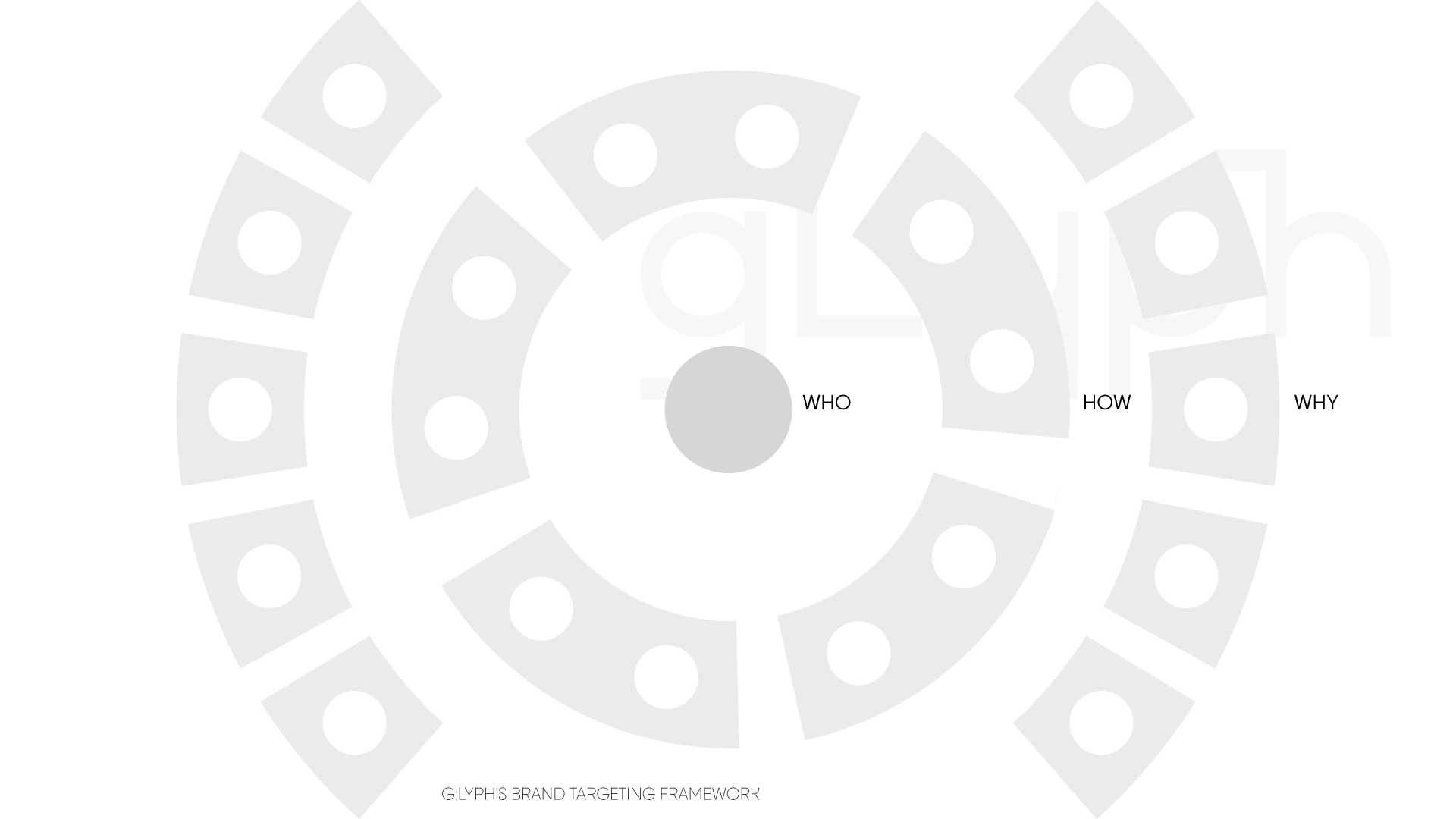
Step 1: Start With “Who” – Understanding Your Audience
Identify Your Core Audience
At the heart of every successful brand is a clear picture of its target audience. Who are they? What challenges do they face? What are their aspirations? Knowing your “Who” allows you to craft solutions that align with their needs and desires.
Example: Netflix thrives because it deeply understands its audience’s desire for convenience, personalized content, and entertainment on-demand. Everything they do—from their algorithm to their original programming—is tailored to their “Who.”
Create Audience Segments
Your audience is rarely a monolith. Effective brands break their “Who” into segments, ensuring that messaging, product offerings, and strategies are tailored to distinct groups.
Example: Nike segments its audience into athletes, casual fitness enthusiasts, and style-conscious shoppers. Each segment receives unique campaigns and product lines that meet their specific needs.
Understand Their Emotional Drivers
Beyond demographics and behaviors, brands must uncover what emotionally connects their audience to their products or services. Why do they care about your brand? What motivates their loyalty?
Example: Patagonia’s “Who” is deeply connected to environmental sustainability. Their audience isn’t just buying outdoor gear—they’re aligning with a brand that reflects their values.
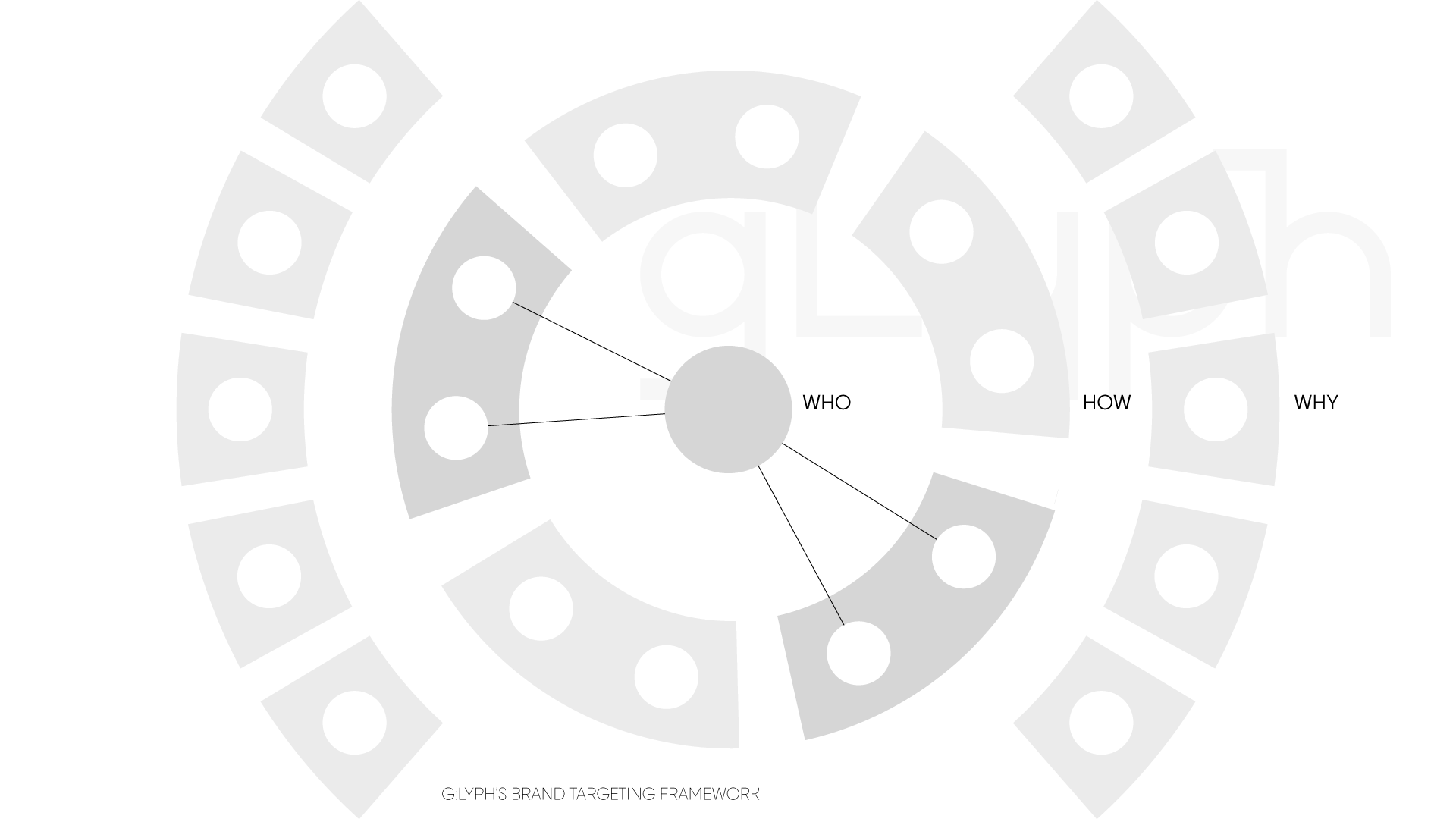
Step 2: Define “How” – Your Principles and Processes
Once you know your audience, your “How” becomes the mechanism for delivering value. This step focuses on execution: how you produce, market, and distribute your offerings to meet the needs of your “Who.”
Establish Your Unique Approach
Your “How” sets you apart from competitors. It defines the principles and processes that make your brand memorable and trustworthy.
Example: Warby Parker’s “How” includes a direct-to-consumer model, free home try-ons, and a one-for-one program that donates glasses to those in need. These principles resonate with their “Who” (style-conscious, value-driven shoppers).
Focus on Consistency
A great “How” builds trust through consistent delivery. Customers come to rely on brands that meet their expectations time after time.
Example: Amazon’s “How” is built on speed, reliability, and convenience. Their obsession with customer satisfaction ensures their “Who” remains loyal.
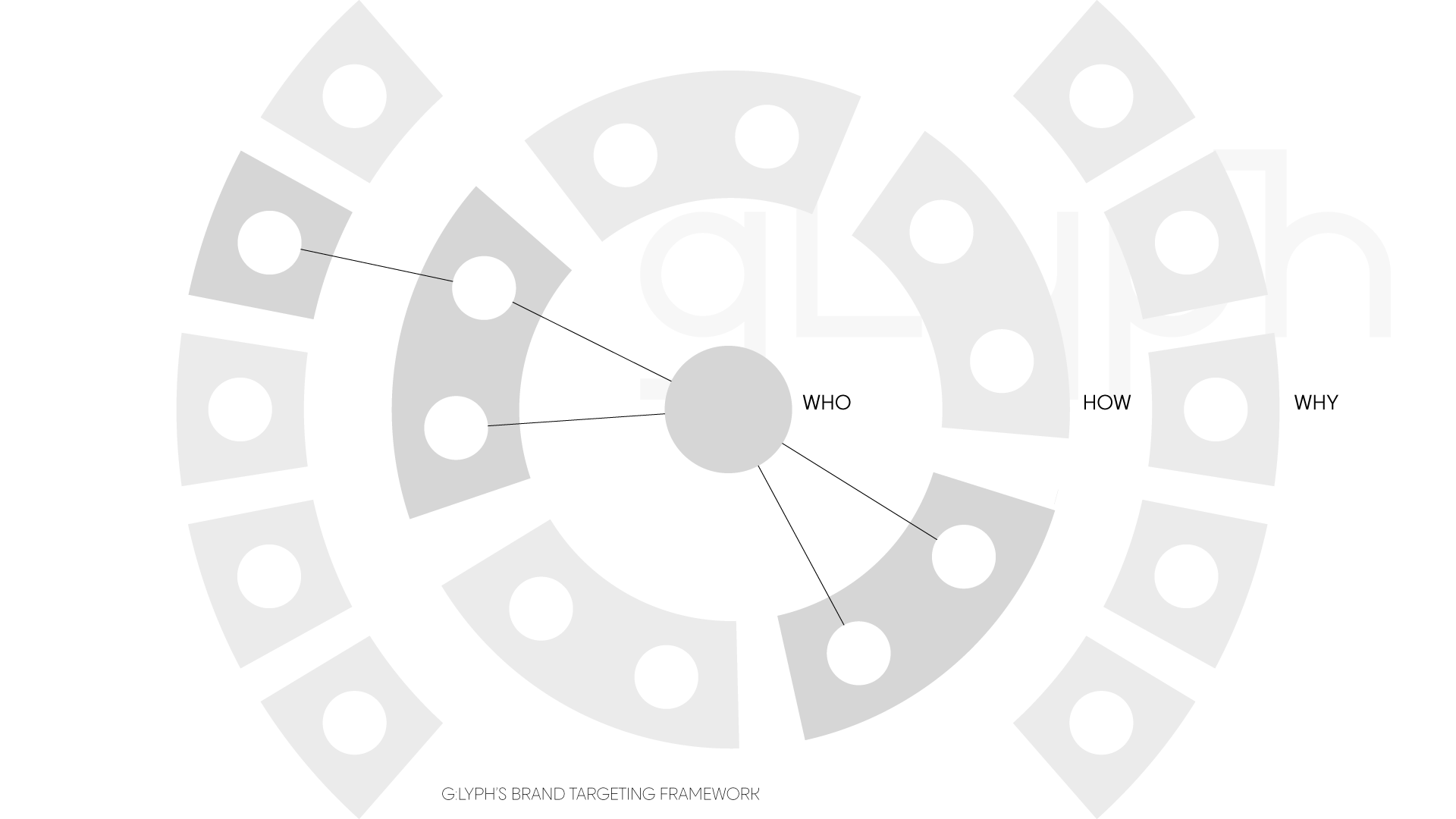
Step 3: Articulate “Why” – The Purpose That Resonates
Your “Why” should emerge naturally from your “Who” and “How.” It’s not a lofty ideal that exists in isolation—it’s the purpose that connects your audience to your brand.
Make Your “Why” Relatable
Your purpose doesn’t have to change the world. It just needs to matter to your audience. When your “Why” aligns with their values, it strengthens emotional connections and loyalty.
Example: REI’s “Why” (“to inspire, educate, and outfit for a lifetime of outdoor adventure”) connects deeply with their “Who,” creating a purpose that feels authentic and engaging.
Avoid the “Purpose Trap”
While your “Why” is important, it shouldn’t overshadow the more tangible elements of your strategy. For most brands, delivering exceptional products and services (your “How”) will resonate more than a grand purpose.
Insight: A small local business may not need a sweeping “Why.” Instead, focusing on solving a specific customer problem or delivering an exceptional experience will create a more meaningful connection.
From “Who” to “Why”: A Framework for Brand Success
Reframing the Golden Circle as “Who, How, Why” ensures that your brand strategy is built outward, with the audience at its core. It’s a practical, customer-focused approach that prioritizes relevance and execution over abstraction.
1. Every brand decisions starts with Who to define your audience and their needs.
2. Build your How to deliver on those needs with clarity and consistency.
3. Anchor your Why to your audience’s values, creating emotional resonance.
By focusing on “Who” first, brands can align purpose with execution, delivering strategies that inspire loyalty, differentiate in the market, and drive measurable results.
Building Brands That Win—Starting With “Who”
The Golden Circle model has captured the imagination of leaders and marketers worldwide, promising that starting with “Why” is the key to building successful brands. But as we’ve explored, this framework leaves critical gaps.
Without a clear understanding of “Who,” brands risk creating strategies that inspire without delivering, attract attention without building equity, and promise impact without providing value.
To truly dominate in today’s competitive markets, brands must shift from abstract ideals to actionable frameworks. The revised “Who, How, Why” model ensures that your brand is built outward from its most important foundation: the audience.
Start with “Who”: Understand your audience deeply—their needs, desires, and values.
Build your “How”: Define the principles and processes that set your brand apart and deliver consistent value.
Anchor your “Why”: Craft a purpose that connects emotionally, but always let it flow naturally from your “Who” and “How.”
This audience-first approach ensures that your brand strategy is not only inspiring but also relevant, practical, and measurable. It prioritizes the actions and systems that create tangible value while leveraging purpose as a secondary driver, not the sole focus.
The Final Takeaway
The brands that win aren’t just those with bold visions. They’re the ones that know their audience, deliver on their promises, and execute with precision.
Reframing your strategy with “Who” at the center allows you to build a brand that resonates deeply, stands out in the marketplace, and drives sustainable growth.
Remember, strategy isn’t just about what you say—it’s about what you do. When your actions are guided by a deep understanding of your audience, supported by a strong framework, and driven by a clear purpose, you’re not just building a brand—you’re building a legacy.
GLYPH is an internationally-recognized brand strategy and brand design agency and consultancy. Our team has been at the forefront of innovating brand strategies and have frequently been rated as one one of the best branding agencies in Michigan.
Is a rebrand on your horizon? Curious how much more competitive your business could be after implementing a new postioning strategy? Grab a cup of coffee with us (in person or virtually) and let's talk about your goals.
